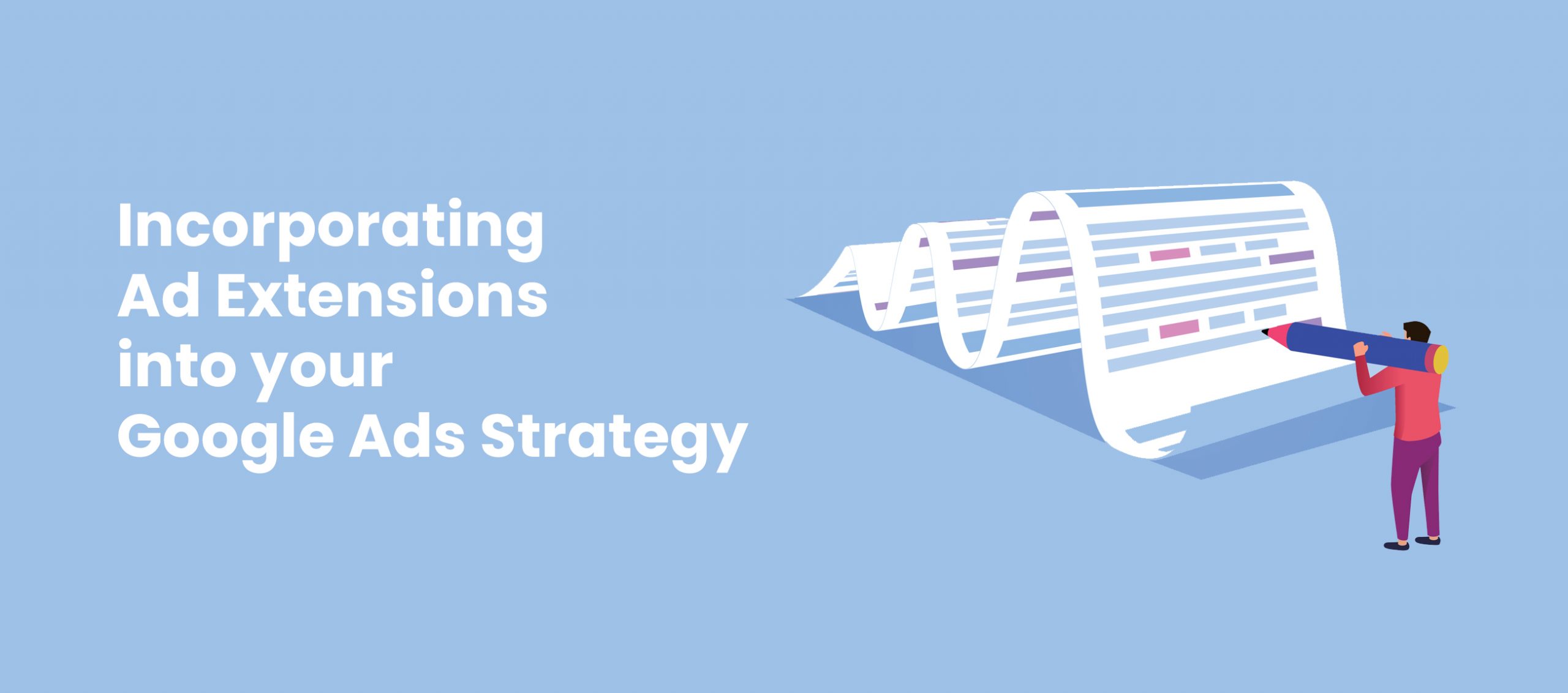Budgeting
The world of digital paid advertising can be intimidating to jump into. On the surface, it seems that large enterprises and banks with a nationwide presence (and the marketing budgets to match) would bully any smaller-spending competitors that tried to enter the ring. While a digital marketing team can certainly benefit from a large Google Ads budget, it is not the end-all-be-all for making your voice heard. We are here to help you build a pay-per-click strategy that will enable you to bid intelligently to reach your target audience, rather than simply bidding more.
Bids are just one piece of the puzzle

If you are new to Google Ads or have not yet begun your SEM journey, you still might already be aware that it involves paying some amount of ad dollars for each click over to your website. In Google Search, this cost per click (or CPC) is determined by how much you are willing to bid on certain types of traffic.
For example, if someone were to type “open a checking account” into the Google Search bar, you will see the first handful of results be populated by text ads. Essentially, these advertisers are among the highest bidders for the search query “open a checking account.” There are a few factors that play a part in their ads showing up, and their bid on those keywords is one of them. For a search query as direct as this example, you can imagine that there may be a substantial number of banks that offer checking accounts who would want to be in front of this user. It is common for the ad presence to go to the highest bidder, so an advertiser would likely need to spend a pretty penny per click to win the auction for a highly competitive search query.
This is where a lot of smaller banks may get discouraged. However, what if I told you it’s not all about the bid? And furthermore, when we get more specific with our targeting parameters and settings, even local community banks can realistically compete for the ad real estate among these highly coveted searches? It is possible and even likely for this to be the case, as long as the appropriate groundwork is set.
Setting up Conversion Tracking
Many of our efforts in Google Ads will be in the form of data analysis. Keeping track of conversions that can be attributed to your Google Ads campaigns will play an important role in analyzing your PPC efforts and performance. Getting this configured first will help with data clarity as we are looking to make educated decisions within our campaigns later. Google has listed instructions for setting up Google Ads tracking, but if you need help setting up conversion tracking on your site from the ground up, it may be best to reference these 5 Steps to Begin Tracking Conversions on your Bank Website.
What keywords are worth going after?

Before you activate your Google Ads campaigns and set them live for the world to see, there is some prep work that is necessary beforehand. Along with writing copy for the ads themselves, it is best to determine what keywords you would like to be showing up for. These two tasks can even go hand-in-hand, as having ads that match the keywords you’re bidding on is helpful for maintaining a strong Quality Score (you’ll hear more about this later on – stay tuned).
With that in mind, here are notable ingredients that make up a strong keyword list:
- Prioritize keywords with high commercial intent. You will want to show up for prospects that indicate they are close to converting rather than wasting money on top-of-funnel traffic. People searching in this way also tend to click on sponsored results more often than organic results (by about twice as much).
- Don’t stray away from competitive keywords – we will have ways to narrow our targeting so you can still have a presence around these without breaking the bank through high CPCs. It is not required for you to be ranked #1 for every keyword. The top position isn’t always the most profitable.
- This keyword list can be more expansive than an SEO keyword targeting list. That’s not to say you should go as far as targeting irrelevant terms, but you have the freedom to include both broad and specific keywords in your PPC strategy. People search in different ways, and the data may suggest that keywords from either extreme end up being solid contributors for you. This number of keywords will change (and ideally grow) over time, but if you can muster it, a list of over 200 keywords will be a great place to start.
- Along with that, long-tail keywords are important to include in your game plan. These more precise keywords may not bring in as many searches per month, but they will generally cost you less per click, with those clicks likely being from prospects with more intent behind their search.
- Consider including Brand/Trademark keywords that you can monitor in their own unique campaign. Many users searching with branded terms could just be your current customers looking to log in to their account online, but they can also indicate a prospect who has done their research already, or a current customer who could be upsold on specific products. Monitoring branded traffic in its own campaign will allow you to analyze how these users perform while also preventing spend on these search queries from getting out of control.
The Importance of Geotargeting

Once you have your ad copy written and your initial keyword list prepared, it will be time to being uploading or creating your campaigns in Google Ads itself. For local banks and credit unions, geotargeting settings within your campaigns will be crucial for saving money and ensuring you are showing up for a relevant audience. Having a presence around a term like “banks with business loans” will be less expensive and more effective when you are focused on a specific county rather than the entire United States. Thankfully, Google allows us to target the towns and counties that your community lives in. We can even expand slightly into a custom radius around a small town, if that will an increase in relevant search volume.
You can also use the geotargeting function to exclude certain areas. For example, if you wanted to reach the majority of Kentucky except for a select few areas that are not within your market, you can start with targeting the state of Kentucky and continue to drill down further by excluding the appropriate towns or counties.
Geotargeting can be done at the campaign level, so this is especially helpful if your branch locations are in multiple, separated markets. As an example, can have one campaign for Vermont and another for New Hampshire, each with their own daily budget.
Essentially, geotargeting will be key for ensuring you do not waste clicks on users outside of your target market. With knowledge of where in the world your ads will be showing, you can get creative with localized copy and targeted messaging that will resonate with your community.
Don’t forget about Ad Extensions

While the bids assigned to your keywords play a role in determining your Ad Rank, thankfully your wallet is not the only factor that is considered. Ad Extensions serve many purposes, but one of their more recent benefits is that Google now takes their expected performance into consideration when calculating Ad Rank. This is a great reason to incorporate Ad Extensions into your strategy, but an even better one is to take up more real estate on the Search Engine Results Page (or, SERP).
Ad Extensions simply existing makes it so a user needs to scroll further to reach other ads and organic results that trail you. Also, different Ad Extensions help make more information be readily available, and give prospects additional options to click, helping improve CTR (which in turn, further improves Ad Rank).
But what do Ad Extensions consist of? How should they be utilized? Ad Extensions can be a way to provide more information on the SERP, such as locations relevant to the search, customer reviews, and clickable phone numbers. Any opportunity to provide more information out of the gate that could influence a decision is an opportunity worth taking advantage of. For example, when someone searches for home loans, you may want your ad result to link to your overarching home loans page. However, this person could be looking for a specific loan that you offer, but they did not reflect in their search. This is a great time to utilize Sitelink Extensions in your ad, so you can show users additional links in your ad to more specific landing pages, such as a link to Home Equity Lines of Credit, Construction Loans, and Government Guaranteed Loans.
What other options for Ad Extensions make sense for my bank?
You can get creative with a variety of different Ad Extensions, but some might make more sense for your bank than others. Location extensions are great for guiding traffic to your nearby branch location pages, while Call extensions can make an inbound phone inquiry just a click away. Google’s Help Center lists all the types of extensions at your disposal and their primary purpose to help you determine what extension types are best suited for you.
What is Quality Score, and why is it important?

Now that your ads are live, it will be time to continuously analyze and adapt to what the data within Google Ads suggests. Outside of metrics such as clicks and conversions, it will also be important to keep an eye on the Quality Score that Google assigns to our ads.
Google keeps some information tight to the vest, but they do provide some of the factor’s that go into Ad Rank. Along with your max bid and ad extension performance, Quality Score is a major factor in determining how visible your ads will be.
Ultimately, Google wants the user experience of their search engine to be as easy and painless as possible for those who use it. If they notice that your ads are not relevant to the keywords you’re bidding on, they will not be as excited to show them no matter what bid you are willing to pay. That’s where Quality Score comes in. They assign your ads a Quality Score based on their relevance to searches you want to show up for, as well as their performance when they do show up. If your ads are constantly showing but rarely get clicked, it may be time to revisit your ad copy and messaging to help improve your CTR. Creating appealing, relevant ads is an effective way to outperform the big-spending competition.
Essentially, large budgets and high bids don’t mean much when nobody clicks your ads or moves further down the funnel to convert. This is where the landing page on your site where you direct traffic has a noticeable impact.
Conversion Rate Optimization and the Importance of User Experience

In relation to Quality Score, it is a best practice to tailor your landing page to fit your keywords and ads that point to it. This helps the overall user experience, as Google wants its online browsers to find answers to their search queries when they are using Google’s products.
However, this is not the only trait to consider when designing your landing page. Keeping user experience as a priority, it is in your best interest to make the user’s path to converting as easy and painless as possible. The less clicks and scrolling necessary for users to end up finding the solution they’re looking for, the better. If you have already paid for a click on your Google Ad, you want to being doing everything you can to not lose this potential customer due to a difficult or confusing website.
Here are some tips to consider for improving the conversion rate of your landing page:
- Offer the necessary information in one location: Making the decision-making and application process as simple as possible will help with keeping prospects on the track to completing a conversion, rather than leaving to look elsewhere for further information first. FAQs on product pages are great for SEO purposes, but also for providing the assistance a user may need before they are ready to cross the finish line.
- Implement a prominent, clear call to action: A call to action should be exactly that: an element of your landing page that encourages visitors to act. If you are using a button, make sure it is large enough to be noticeable and attention-grabbing without being distasteful. The message itself typically should create a sense of urgency while clearly communicating that it will take the prospect to the next step in the process.
- Utilize A/B Testing: Trying multiple landing page designs and layouts will help you get a better understanding of what style resonates best within your market. This is an ongoing process, so stay creative and think outside the box to learn what new ideas stick.
How to Analyze Search Term Reports & Build a strong Negative Keyword Strategy

Once you have your new ad campaigns created and customized, you can begin letting the data pour in. Google Ads campaign management is not a “set it & forget it” type of project. The way users interact with your ads can be evaluated through the data that Google Ads provides. As more time passes, more data will help clarify the story, so larger sample sizes tend to help you make a more accurate assessment. However, frequent adjustments are often rewarded in Google Ads, so include weekly checks as a part of your routine to help stand out amongst the tough competition.
One way to focus on efficiency and funnel your budget to areas that matter is to evaluate Search Term Reports. The are available in Google Ads itself and will show you what is being typed in the search bar that results in your ads receiving impressions and clicks. There are two primary benefits to this report: Mining for new keywords to ad to your bidding strategy and determining irrelevant phrases to add to your negative keyword list.
When it comes to making the most of a smaller budget, your negative keyword list will certainly come in handy. You can typically build out a list that you want to start with, made up of words that you do not want to waste ad dollars on, such as people searching for products you don’t offer, or searching directly for competitors that you don’t want to waste money on.
The Search Term Report is a good way to grow this list and stay on top of irrelevant queries that fell through the cracks. Google is not always the most accurate with what queries they decide to show your ads for, so adding negative keywords regularly will help ensure you do not waste precious clicks on users that would not be legitimate prospects.
Need help with PPC campaign management?
If improving your paid ad performance is something you need help with, consider working with a team of experts. At BankBound, our digital marketing specialists are always happy to speak with other financial marketers. Contact us with your questions or to get started with digital ads for your financial institution.


